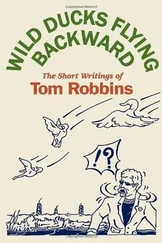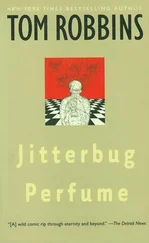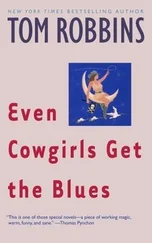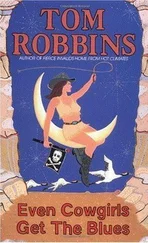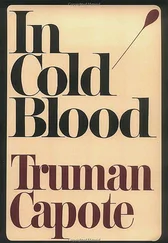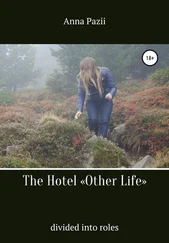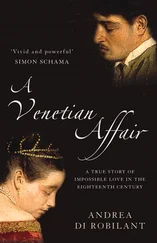The next morning, armed with a gracious letter of recommendation, believe it or not, from John H. Colburn of the Times-Dispatch, I found my way to the offices of the Seattle Times . Even though it was a Saturday, I chanced that there might be someone in the newsroom with sufficient authority to answer my inquiry about the possibility of a part-time job. I was received by none other than managing editor Henry McLeod, who, after studying the letter (it evidently made no mention of Sammy Davis Jr.), informed me that an assistant features editor at the Times was about to depart for Europe on a six-month sabbatical and as yet no replacement had been hired. I started to work at the Times on Tuesday.
One of my assignments in the features department was to edit the daily advice column, Dear Abby . When its author, Abigail Van Buren, would visit a city whose paper carried Dear Abby, it was her habit to drop by that paper’s newsroom to pay respects. At the Seattle Times, she specifically requested to meet the person responsible for the headlines on her columns therein, as they were, she said, most unlike the Dear Abby headlines in any other paper (and there were scores of them) that published her. I believe she used the adjective “colorful.” Thus it was that I came to shake the hand of the woman who’d comforted more brokenhearted lovers than all of the booze in all of the gin joints this side of Casablanca. In our brief conversation, though, I neglected to ask Abby what I might do about my new wife, to whom I was experiencing greater difficulty adjusting than to my new city.
The features department was located next to the much smaller arts and entertainment department, and toward the end of my projected six-month stint at the Times, I had an unobstructed view of a parade of little blue-haired ladies in tennis shoes coming by to interview for the recently vacated art critic position. It was a freelance position, actually, the Times art critic was not on staff, and as I watched the dilettantes and Sunday watercolorists sashay in and out, I remember thinking that visual art in Seattle was about to be smothered with a perfumed hankie. The threat had nothing to do with gender, mind you (women such as Barbara Rose, Lucy R. Lippard, and Rosalind E. Krauss were already among the most illuminating modernist critics in the business), but, rather, that these would-be arbiters of taste gave off a vibe clearly indicating an approach that would be reactive rather than analytical; that when evaluating art they’d consistently favor the traditional over the unfamiliar, the pretty over the rigorous, the decorative over the expressive, the fully clothed over the naked, the prudent over the bold.
At some point in the lamentation, it also occurred to me that once I started grad school — I’d been accepted by the University of Washington — I’d still need to augment the modest salary Susan was commanding from the brokerage firm where she’d just been hired. So, bending once again to impulse, and maybe even imagining myself a knight on a white donkey, I gathered a sampling of the art reviews I’d written for the Proscript at RPI, strolled into the office next door and plopped them down on the desk of arts and entertainment editor Louis R. Guzzo. “Why not me?” I asked.
Why not, indeed? A month or so later, after giving myself a crash course in Northwest art history (it helped a bit that we’d discussed painters Mark Tobey and Morris Graves in my aesthetic classes at RPI), I was being paid to look at paintings and sculptures, to think seriously about them, and propagate my opinions thereof, never mind that those opinions were only intermittently supported by deep knowledge or keen insight.
Soon there was another development. Lou Guzzo’s right-hand man, the assistant arts and entertainment editor, left for greener pastures (though what besides Gaddafi’s mania could be greener than Seattle?), and I was offered the job. I would be expected, in addition to my art beat, to attend and review those cultural events that were deemed not blue chip or mainstream enough to warrant Guzzo’s attention; to cover, for example, the UW drama department, various hootenannies, traveling ice shows, pop music, and foreign films. How cool was that?! I set about convincing myself (foolishly, as it turned out) that I could handle the load and still become fluent in Japanese.
Naturally, I accepted the offer. To be a reviewer, even for B-list events, on just about any newspaper is a dream job, and I’d sometimes fantasized about it when reviewing student plays and musical theater at RPI. Now I’d fallen into it like a drunk hobo falling into a vat of champagne. In fact, so many things had fallen into place, one after the other, in the nine months since I’d left Richmond that I began to suspect that Satchmo, Sammy, and Pearl Bailey, never mind the gods, were watching over me, moving the pieces.
And then… and then there was another unexpected development. (Was Pearl Bailey practicing voodoo?) My unsturdy shoulder had been to the arts wheel a scant few weeks when Lou Guzzo was hospitalized with a hemorrhaging ulcer. He’d come close to dying (easy with those pins, Pearl!), and wouldn’t return to work for nearly two months, during which time I, a raw rookie, was the arts and entertainment department of the Seattle Times, B-list and A-list, the whole enchilada: talk about a baptism by fire! And that, patient reader, is how Tommy Rotten came to publish authoritative critiques of the first opera and the first symphony concert he’d ever in his life attended.
For its mid-winter concert, my symphonic cherry popper, the Seattle Symphony, had announced a Rossini program. It was a vaguely familiar name, Rossini, but I could no more have identified one of his compositions — What? Rossini wrote the William Tell Overture? I would have sworn that was Tonto — than I could have named the stars in the Crab Nebula. Nothing to do but head to the downtown branch of the public library and look him up. (Yes, the library: in 1962, “google” was the word for something obnoxious that clowns did with their eyes.)
There was a picture of Gioachino Rossini in a music encyclopedia, and I was immediately struck by how closely the composer resembled movie actor Robert Mitchum. They each, Rossini and Mitchum, projected an air of dreamy menace, primarily due to their heavy lids. “Bedroom eyes,” some might describe them, although in Mitchum’s case it was rumored that he looked perpetually sleepy because he was perpetually stoned, an opinion advanced by Hollywood gossipmongers after the actor was busted for smoking pot. There was no mention in Rossini’s biography of the composer having suffered a similar invasion of his privacy, but he was widely known as a “gourmand,” a polite French word for someone with the chronic munchies, and it’s easy to envision him raiding the pantry late at night in search of chocolate chip cookies. Moreover, Rossini had a reputation as a cynical wit and for hiding behind a mask of indifference, both characteristic of the film noir sensibility for which Mitchum was longtime poster boy. For composing the Stabat Mater, the ten-part work the Seattle Symphony performed that snowy evening, Rossini had received from his patron a gold, diamond-encrusted snuffbox (Really? “Snuff”?) and the music itself is as dark and expressionist as the best film noir, except for one quartet part that is strangely almost danceable.
Okay, I may have been reaching, but what else could I do? At the end of the concert I rushed back to the office and pecked out for the next day’s paper my assigned review, but because the musical knowledge I’d suddenly acquired in my library research was hardly adequate to fill the allotted space, I padded the critique with a few comparisons of Rossini and Robert Mitchum, their personas and their work, on a variety of fronts, real and imagined. Mostly imagined. Then I waited.
Читать дальше

